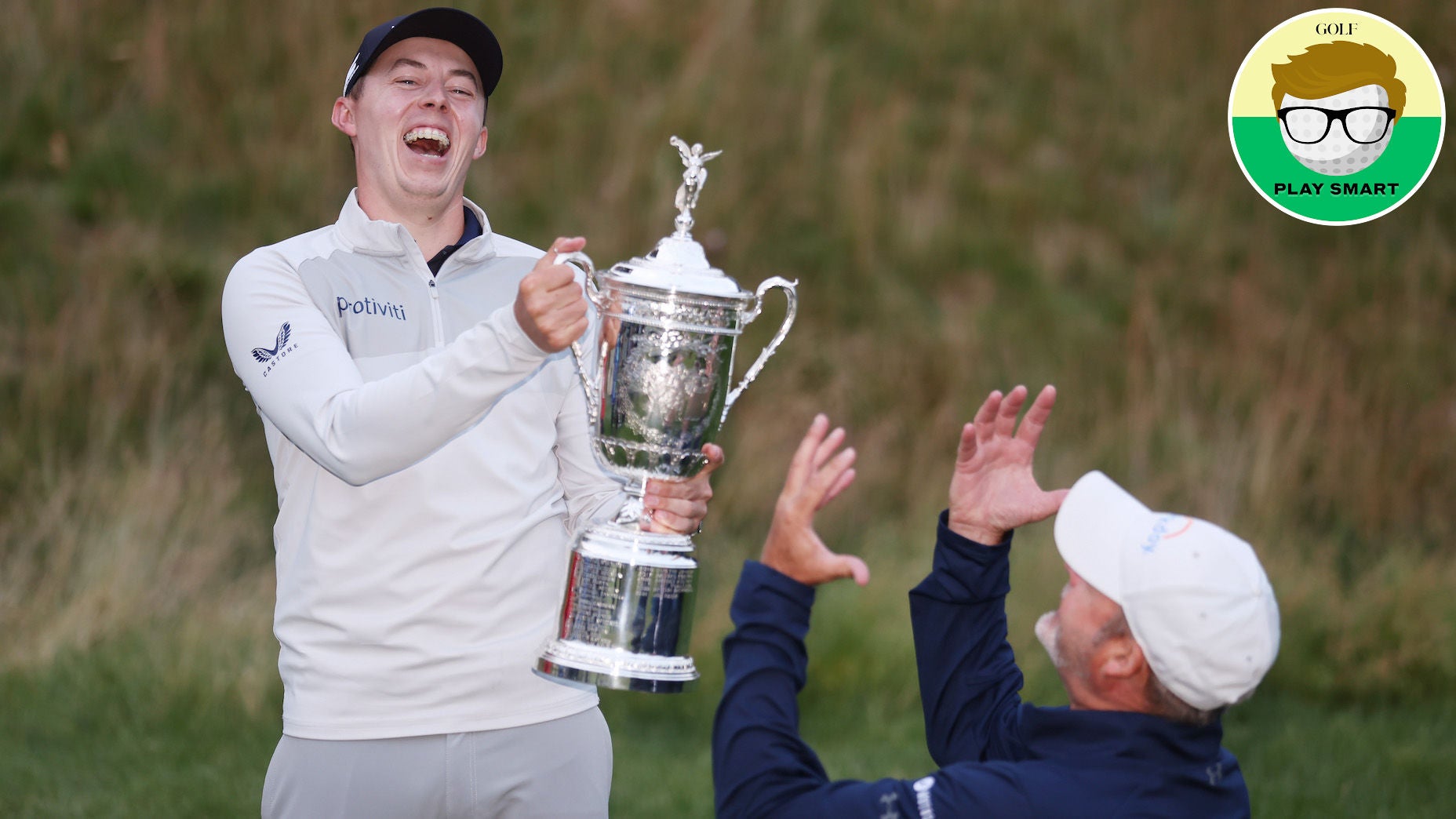Welcome to Play Smart, a game-improvement column that drops every Monday, Wednesday and Friday from Game Improvement Editor Luke Kerr-Dineen (who you can follow on Twitter right here).
BROOKLINE, Mass. — On his third hole of the day, Rory McIlroy smacked his tee shot 309 yards down the middle of the fairway. That left him only 172 yards from the green, but he missed in the worst possible spot: short-sided to a front left pin. He hit his chip nine feet short, and missed the putt.
Three groups later, Matt Fitzpatrick was in an almost identical spot. Eight yards behind McIlroy’s divot on the same line, Fitzpatrick aimed for the middle of the green and let his natural draw bring it back around. His ball ended just eight feet past the pin, and he rolled in the putt.
On paper, it was a rather innocuous moment on one of the farthest-flung corners of the golf course, one that only a sparse gallery who braved the journey witnessed. Yet it was a moment that perfectly embodied McIlroy’s ongoing issues in major championships, and why Fitzpatrick, against all odds, proved he belongs in the upper echelon of the sport.
Fitzpatrick is, quite simply, the golfer I want to be.
He’s the one you should want to be, too.
Fitzpatrick is not that tall. Not that strong. His swing is quick and quirky. His chips cross-handed. His putting is homegrown. Relative to the field of players he beat, Fitzpatrick doesn’t hit the ball that far, either: He ranks 108th on the PGA Tour in driving distance, up from 121st in 2020, the year he started a dedicated speed training regime. If you see Fitzpatrick walking across the range, you’re not thinking “professional athlete.”
And yet, he is one. An elite one, at that. One who just accomplished one of the rarest feats in golf history: winning a major championship on the same site he captured the U.S. Amateur, the only player to do so since Jack Nicklaus.
And Fitzpatrick arrived here not through a process of reinvention, but refinement.
Fitzpatrick never tore anything down to start again. The biggest change he made was in 2020, when he took a good hard look at his game and realized he needed more distance off the tee.
“It was the big thing really that was holding me back,” he said. “My putting was good. My short game was good. My approach play was fine, but my driving…I was straight but just didn’t have that distance to take advantage of everything else.”
When he went about chasing it, he was clever but careful. He brought in biomechanist Dr. Sasho Mackenzie as a consultant, and tasked him with working with his longtime coach Mike Walker. His madate was clear: This was to be process of evolution, not revolution.
“It’s important to be conservative with an already successful player,” Dr. Sasho Mackenzie says. “Avoid injury and don’t sabotage an already high level of performance.”
The catch was the progress would be slower, which means he needed to be extra disciplined if he wanted it to work. It was worth the tradeoff. Fitzpatrick wasn’t going to try to be something he wasn’t, because he knew it’d never work. His swing changed along the way, but stopped short of an overhaul. As the yards slowly came, his game slowly improved with it.
Fitzpatrick made sure of this by keeping his own statistics. After every shot, he walks off the distance away from his intended target, and tracks it all in a master spreadsheet. If something started moving in the wrong direction, he spotted it instantly, and nipped it in the bud.
“Everything he does is very statistics focused,” says his brother, Alex. “His driving was already very good, he wanted to get longer without losing his accuracy.”
Indeed, accuracy remained Fitzpatrick’s priority. His longer drives didn’t change his underlying approach to the game: Moving his ball around in a safe, simple, smart way. That his ball was going further along the way didn’t really matter, in his mind. It just makes life a little easier.
“You’ve got to plot your way around,” Fitzpatrick says of his approach. “You really have to think about where you want to hit it, where you don’t want to hit it.”
Each day, he’d sharpen his game’s blade. A little bit each day, until one day, it sliced through the field at The Country Club. It may have looked different, but he didn’t care.
”I’d rather win than worry about looking stupid,” he says. “If it helps your game and it helps you improve, then there’s no reason not to do it.”
That’s why I’m so inspired by Fitzpatrick. Because he’s not the most naturally-gifted player, but also doesn’t need to be. He works hard, and he works smart. He stays disciplined. He plays his own game and always try to improve it, without caring how something looks.
You can do all those things. And just like Fitzpatrick, you’ll be a better golfer for it.
